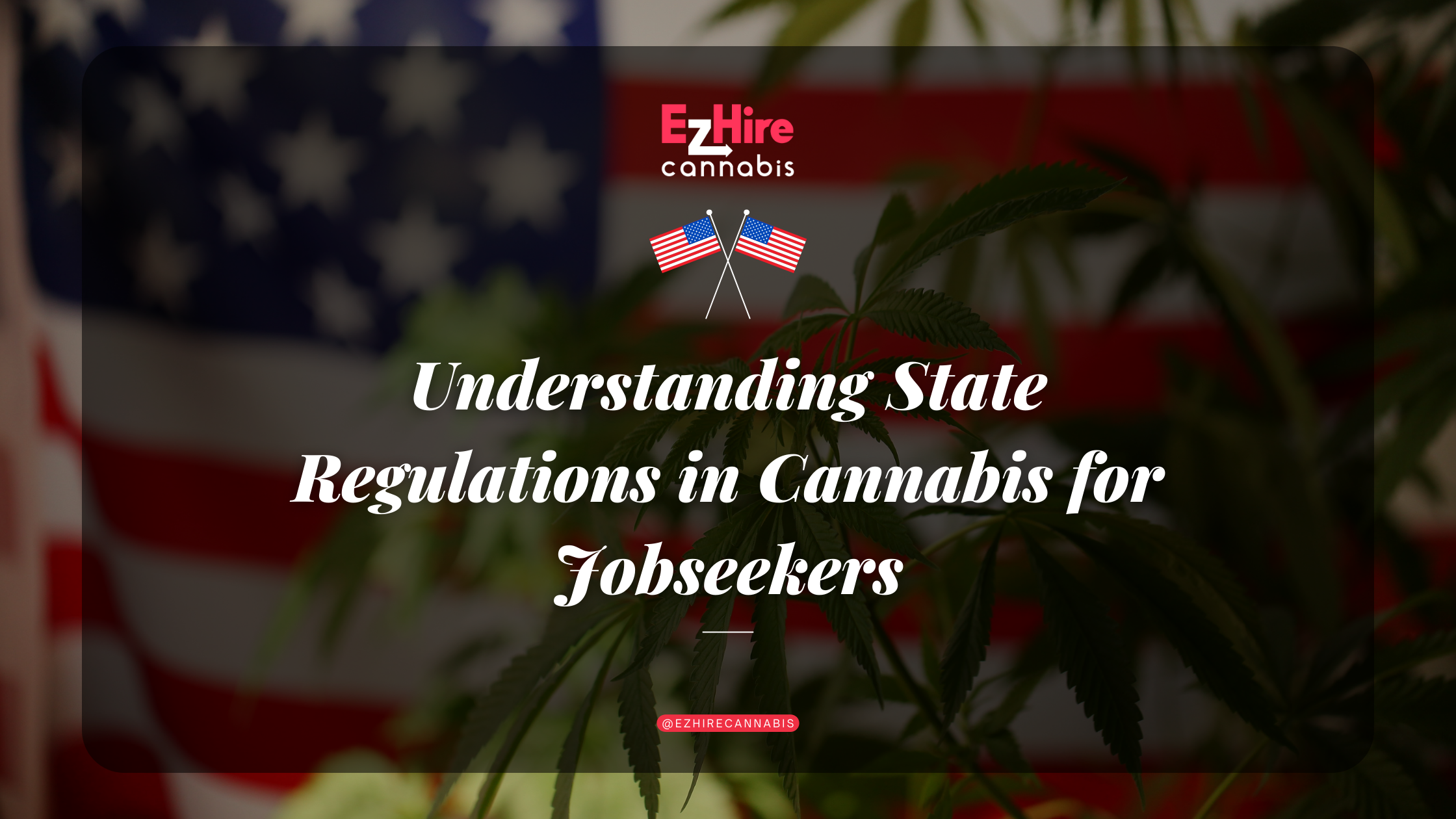
Insights on Leafly's Annual Cannabis Job Report
On February of 2022, Leafly released its annual report, giving insight into the present situation of the cannabis industry through the use of available market data.
Data obtained by research group, New Frontier, estimates the market value of the U.S. cannabis industry will reach $30 billion annually by the year 2025.
In the report, the cannabis industry supported more than 428,000 jobs in January of ‘22, a significant increase of the previous years. These jobs include: cultivation, harvesting, sales, legal, security and accounting.
WHY COUNT CANNABIS JOBS?
Due to federal prohibitions, the U.S. Bureau of Labor Statistics refuses to count legal cannabis jobs despite the Cannabis Industry being one of the fastest growing job industries in the United States. This created a gap in job documentation that Leafly and Whitney Economics have worked to fill by releasing annual job analysis. In 2017 they reported 122,800 jobs, 2018 - 149,300, 2019 - 211,000, 2020 - 243,700 and 321,000 in 2021.
These reports gave experts insight into the future and tracked jobs created in the legal market. This year's report showed a higher chance of being hired for a cannabis-related position against some other fields.
The workforce in the legal marijuana industry is growing, coming in higher than some other industries such as hairstyling or being a barber. The 428,059 full-time legal cannabis-supported jobs represent a 33% job increase compared to the previous year. Unlike the 8% increase in job growth in the finance sector projected by the U.S. Bureau of Labor Statistics, the cannabis industry maintained more than a 27% annual job increase for the fifth year. "There are now more American Cannabis workers than firefighters."
FACTS TO NOTE FROM THE REPORT
- America's legal cannabis sector created at least 280 new jobs daily last year.
- New Mexico, New York, Illinois, New Jersey, Florida, and Arizona will increase their hiring rate in 2022.
- The legal cannabis market is expected to grow by 18% in the coming year.
- America's legal cannabis industry will likely hit about $45 billion by 2025.
METHODOLOGY USED
The research team considered all available factors - legal framework, license data, investment environment, and the people's demand. The team also evaluated major micro-events like covid-19, hiring pessimism, and high resignation.
Each of the 38 legal weed states has unique laws regulating cannabis jobs and sales. Thus, they treated each state on its merit. Considering several prohibitions, they excluded unregulated hemp products.
The research counted "all plant-touching jobs and indirect jobs that support the industry" to ascertain the number of available jobs.
THE TOP TEN LEGAL CANNABIS STATES AND MARKET TRENDS
ARIZONA
After legalizing cannabis for adult use sales, the industry helped create more jobs, increasing the hiring rate of companies in 2021. This change in regulation affected the workforce in Arizona positively while also improving legal sales of Cannabis in the state. With a 31% increase in the market, sales are over 1.35 billion dollars in both the Medical and adult-use stores compared to 2020. However, the late arrival of the regulation limited companies from being able to hire more as their employment plans for the year were already set, with just a 13% increase hiring rate witnessed in the state. We expect to see a much higher rate with the increase in jobs created within the Arizona Cannabis industry in the coming years.
CALIFORNIA
California is one of the top job-creating states for legal cannabis in the United States despite having some setbacks. Challenges such as high taxes, red-tape in approving licenses, and local store ban limit the expansion of the Cannabis industry. Additionally, the uncertainty of the pandemic, investment reduction, and hiring reluctance are constrictions for the sector.
Apart from that, less than 35% of the population of California accepted the sales of regulated cannabis, which caused oversupply to illicit markets while the licensed shops remained undersupplied.
Still, the state witnessed a higher rate of Cannabis job creation and legal sales of Cannabis, with numbers over $5.1 billion in sales and 83,607 jobs in 2021.
The California market could flourish with proper implementation of local regulations and faster approval of licenses.
FLORIDA
Adult-use cannabis is not yet legal in Florida, however, it has one of the more flourishing medical marijuana markets. Recently, the state witnessed a high number of residents added to the medical patient's list; it now doubles the size of other medical use-only markets such as Oklahoma. Florida's heavy investment into this sector and the creation of additional dispensaries also help to improve access. A change in policy to embrace the adult-use market could double the state's sales and job creation.
ILLINOIS
The cannabis industry in Illinois has seen an astonishing increase in sales, making billions of dollars from legal marijuana and creating thousands of jobs within the industry. However, Illinois still falls behind states such as Oregon & Michigan.
There are several factors that prevent the Illinois cannabis industry from reaching its full potential. Currently, the state has 55 medical dispensaries and 103 adult-use outlets to serve about 12.67 million residents – 12 outlets per million is not enough for optimal access by residents. Compared to Oregon or Michigan, with 181 and 51 outlets per million. Accessing legal cannabis in Illinois is still a problem for it’s residents. On top of that, newly licensed companies are winvolved in lawsuits that have drained their capital and left several new works uncreated.
MASSACHUSETTS
Massachusetts' goal is to divert the users from the illicit market to the legal cannabis market. As a result, It has constantly approved retail licenses, which have improved state revenues and job creation. As of early 2022, it had issued 387 approved retail permits. The robust legal cannabis system gives people the freedom to buy weed without having to go too far.
Marijuana-related jobs are now part of the state's job count.
MICHIGAN
Michigan's Marijuana industry made $1.72 billion and supported 31,152 jobs, an 81% increase in 2021. This growth is due to Michigan's robust cannabis market – 402 dual retail stores, 63 Medical centers, and 47 adult-use outlets.
With a flexible retail licensing system, the state is trying to end the illicit market. However, the local municipal prohibition of legal sales sabotages the state government's effort. To be successful with the black market to legal market migration, the number of Michigan cities that allow licensed adult sales of cannabis must increase from 160.
NEW JERSEY
New Jersey's Legal Marijuana industry is dysfunctional and poorly regulated, at best. Medical marijuana patients depend mainly on the illicit market as the legal weed is overpriced and least accessible. The state only has 23 operating dispensaries, which cannot serve the 123 000 patients.
New Jersey legal cannabis industry sold just $189 million in product and supported 3,147 jobs. This revenue is meager compared to other states' sales. Despite high taxation, the government finds it hard to track marijuana sales and taxes.
A reform could put New Jersey on par with Florida and Pennsylvania in terms of revenue. New Jersey should make about $1.7 billion in sales with 25,000 cannabis-related jobs in four years with an organized system.
NEW YORK
New York could have been one of the top cannabis states if it had an organized and regulated system. It only made $149 million in sales and created 2,358 cannabis-related jobs in 2021.
New Yorkers have little access to licensed dispensaries as the state has only 40 licensed dispensaries to cater to its residents. Thus, New Yorkers are underserved residents who will continue to rely on the black market. This situation could explain why users spent $1,130 per year, which is way less than the national average of $2700.
The best explanation for the low sales experienced in the New York legal cannabis industry is that New Yorkers' illicit markets are readily available. If New York could make dispensaries more accessible to the patients and allow adult-use sales, its demand would increase.
OREGON
Like other old adult-use states like Colorado and Washington, Oregon has slow growth in the cannabis industry. With a 7% rise compared to last year, consumers bought $1.18 billion products and created 19,938 jobs. Oregon cannabis market has reached the point where consumers migrate naturally to the legal market.
The U.S. legal cannabis market experienced a boom in 2021 in terms of revenue and job creation. However, the market is still underexplored; there is room for improvement. A more liberal approach to adult use cannabis and effective regulation implementation would positively change the industry in the coming years. States like California should also endeavor to improve their communication and staff to cater to the needs of licensed marijuana stores. A more favorable environment would make the industry flourish.




